Create successful ePaper yourself
Turn your PDF publications into a flip-book with our unique Google optimized e-Paper software.
Real-time graphics forstereoscopic broadcastBroadcastPlans to show moving pictures inthree dimensions are as old as the movie/TV industry itself. After first experimentsin the early 20th century, the technology isfinally ready for prime-time. Far from beingsimply a visual gimmick, stereoscopy canhelp broadcasters to add a “new dimension”of information to their content. Examples ofuse include sports broadcast where stereoscopyallows the viewers to follow the actionmore precisely than in a 2D projection.Turning 2 dimensions into 3. “Manyroads lead to Rome” when it <strong>com</strong>es toshowing 3D video. Existing technologies canroughly be separated into two categories: 3Dsystems that use conventional screens andrely on special glasses for the viewer, andsystems that use specialized screens andno glasses. Note that Viz Engine producesstereoscopic output independently of thescreen technology. In short, anaglyphimages provide a stereoscopic 3D effect byusing two-color glasses, while polarized3D glasses create the illusion of threedimensionalimages by restricting the lightthat reaches each eye. Alternate framesequencingis a third method of showing 3Dfilm using specialized glasses. The imagesare placed into a single strip of film in alternatingorder; the first left-eye image, thenthe corresponding right-eye image, thenthe second left-eye image, followed bythe second right-eye image and so on.A fourth option, autostereoscopy, is amethod of displaying three-dimensionalimages that can be viewed without the useof special headgear or glasses on the part ofthe user. These methods produce depth perceptioneven though the image is producedby a flat device.A <strong>com</strong>plete stereo-enabled platformfrom editing to on-air. It is one of the challengesof 3D broadcasting that graphicsbehave differently in 2D than they do in 3D.DimensionsStereoscopy is 3Dimaging enhancingthe illusion of depth.While 3D graphics can look perfectlyalright when you see them as a 2D projection,they may look very wrong whenrendered as stereo pairs for 3D output. Thisis because in 2D we cannot differentiatebetween an object that is further away andscaled up and an object which is closer butscaled down.Viz Artist has by nature always been afull fledged 3D program, from version 3.3revision 9082 it also features built-in stereoscopicrendering capabilities.Grids help the designers to move andalign the objects in true 3D. During playout,the two graphics cards, or two engines, takeon the role of the left or right camera, orthey can render an image which <strong>com</strong>binesthe pair as side by side, interlaced etc. (Fora <strong>com</strong>plete list please see the Viz Artistdocumentation.)What is needed to get started? Creatingstereoscopic play-out is in the nature of<strong>Vizrt</strong>’s graphics applications. Even whenthe play-out happens in 2D on conventionalTV screens, the graphics themselves aredelivered as true 3D animations, followingproper physical and optical rules. Changingthe play-out to support stereoscopic devicesis therefore just a “natural” extension of theactual rendering process.Stereo support is native for Viz Engine 3.3from revision 9082. For the VGA version VizEngine supports quad-buffered rendering,which enables the scene editor for stereoviewing too. When selecting the side-by-sideapproach, only the full screen on-air modewill display a stereo pair where the left andright images are next to each other.To produce two separate SDI fill and keysignals, either a dual-channel setup or twoViz Engines are needed. Viz Trio or any othercontrol software will <strong>com</strong>municate with thetwo engines using a software <strong>com</strong>ponentfrom the Viz Video Wall distributor to ensurefield-accurate synchronization.Key benefits of adopting Viz graphics foryour real-time and pre-recorded stereoscopicproductions:• When properly designed, most existing Vizscenes already work immediately• <strong>Vizrt</strong>’s existing control software will worksimmediately for stereo• <strong>Vizrt</strong>’s existing control and renderinghardware can be used for stereo or singlecamera output• The output format can be changedon-the-fly• Stereo parameters can be adjusted in realtimeduring production• Editing is available in stereo mode• Supports both shutter-glasses and asautostereoscopic displaysIf you are interested seeing <strong>Vizrt</strong>’s real-timestereo 3D capabilities for yourself, pleasecontact your local Viz office for a demo.As an existing customer, if you are interestedin adapting your Viz system for stereo production,or want to try your hand at designing Viz3D scenes stereoscopically, contact your localViz representative so we can FTP you the latestdocumentation and some sample scenes.The <strong>Vizrt</strong> Catalogue 2011 45




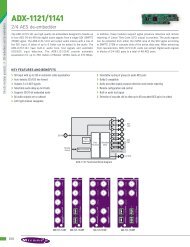

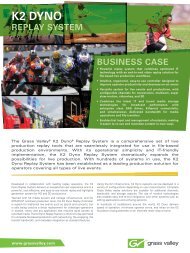
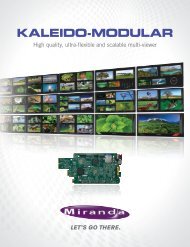
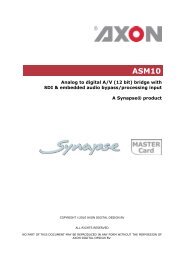
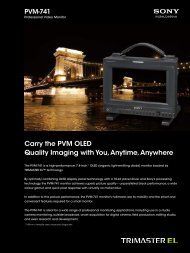
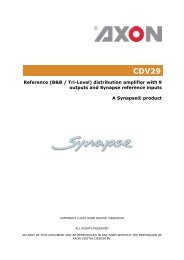
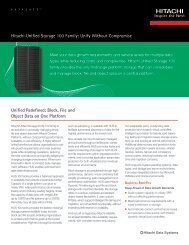
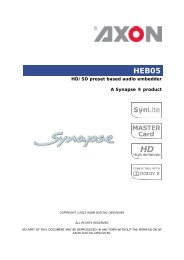

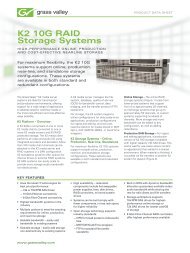
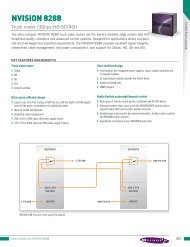
![Datasheet [pdf 653.2kb] - DK-Technologies](https://img.yumpu.com/38904183/1/184x260/datasheet-pdf-6532kb-dk-technologies.jpg?quality=85)